Category: Newest Resources
- Home
- /
- Shop
- /
- Newest Resources
- /
- Page 3
Showing 41–60 of 385 resultsSorted by latest
-
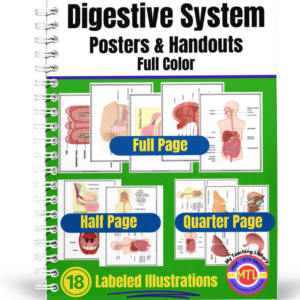 $5.00Buy Now
$5.00Buy Now18 colorful, labeled illustrations of the complete digestive system to use in a Science (Biology / Anatomy) classroom as posters and handouts! Illustrations are full page, 2 per page (half page) and 4 per page (quarter page). Suggested to use with: Digestive System | Coloring Workbook (or) Biology – Anatomy Coloring Workbooks Bundle
-
Sale!
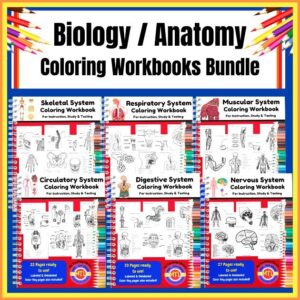 Buy Now
Buy Now$30.00Original price was: $30.00.$25.00Current price is: $25.00.Bundle of all six of My Teaching Library’s Biology / Anatomy Coloring Workbooks. Each workbook is complete and detailed, perfect for instruction, study and even testing high school level Biology and Anatomy students.
Included illustrations (diagrams) all have three types of pages:
a: labeled (great for instruction, use as a handout, poster or answer key)
b. unlabeled with blank color key (student coloring worksheet)
c. unlabeled (student page for study or an assignment, quiz or test having students label each part)Detailed teacher notes are included which give suggestions on the use of each.
-
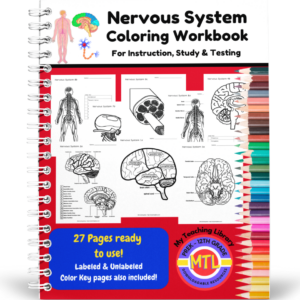 $5.00Buy Now
$5.00Buy NowComplete and detailed, this Nervous System Coloring Workbook is perfect for instruction, study and even testing high school level Biology and Anatomy students. There are 9 different illustrations (diagrams) and each have three types of pages:
a: labeled
b. unlabeled with blank color key
c. unlabeled
Detailed teacher notes are included which give suggestions on the use of each. -
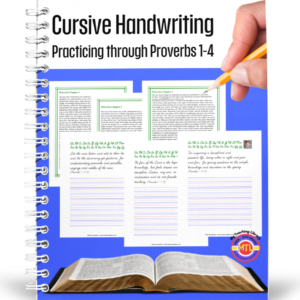 $8.00Buy Now
$8.00Buy NowThis resource has been created with three purposes in mind:
- 1st- To give students an opportunity to practice cursive handwriting
- 2nd- To allow students to read (and think) about scripture while they are practicing their handwriting
- 3rd- The resources provide an opportunity for parent/teacher and student(s) to converse about scripture and how to apply to their everyday lives.
There are 61 pages for students to practice their cursive handwriting skills. Each page will have students writing scripture, starting with Proverbs 1 and work through Proverbs 4.
-
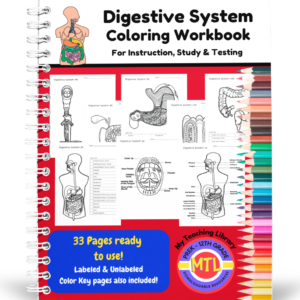 $5.00Buy Now
$5.00Buy NowComplete and detailed, this Digestive System Coloring Workbook is perfect for instruction, study and even testing high school level Biology and Anatomy students. There are 11 different illustrations (diagrams) and each have three types of pages:
a: labeled
b. unlabeled with blank color key
c. unlabeled
Detailed teacher notes are included which give suggestions on the use of each.
(Suggested color posters and handouts to use with this resource: Digestive System | Posters and Handouts) -
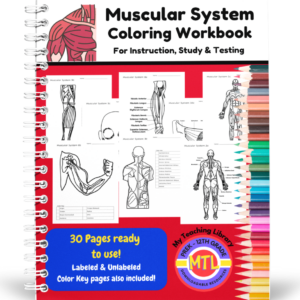 $5.00Buy Now
$5.00Buy NowComplete and detailed, this Muscular System Coloring Workbook is perfect for instruction, study and even testing high school level Biology and Anatomy students. There are 10 different illustrations (diagrams) and each have three types of pages:
a: labeled
b. unlabeled with blank color key
c. unlabeled
Detailed teacher notes are included which give suggestions on the use of each. -
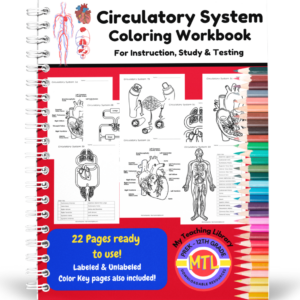 $5.00Buy Now
$5.00Buy NowComplete and detailed, this Circulatory System Coloring Workbook is perfect for instruction, study and even testing high school level Biology and Anatomy students. There are 7 different illustrations (diagrams) and each have three types of pages:
a: labeled
b. unlabeled with blank color key
c. unlabeled
Detailed teacher notes are included which give suggestions on the use of each. -
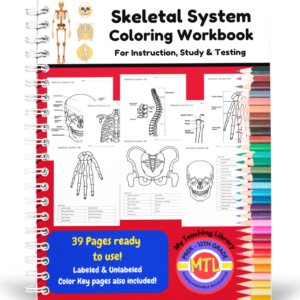 $6.00Buy Now
$6.00Buy NowComplete and detailed, this Skeletal System Coloring Workbook is perfect for instruction, study and even testing high school level Biology and Anatomy students. There are 13 different illustrations (diagrams) and each have three types of pages:
a: labeled
b. unlabeled with blank color key
c. unlabeled
Detailed teacher notes are included which give suggestions on the use of each. -
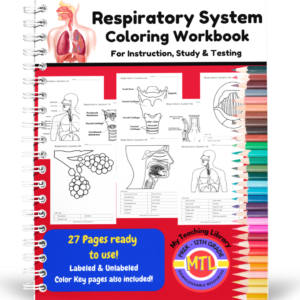 $4.00Buy Now
$4.00Buy NowComplete and detailed, this Respiratory Coloring Workbook is perfect for instruction, study and even testing high school level Biology and Anatomy students. There are 9 different illustrations (diagrams) and each have three types of pages:
a: labeled
b. unlabeled with blank color key
c. unlabeled
Detailed teacher notes are included which give suggestions on the use of each.Respiratory Coloring Workbook Preview Video
GET THE ENTIRE BIOLOGY / ANATOMY COLORING WORKBOOK BUNDLE!
-
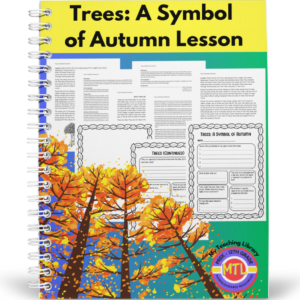 $2.50Buy Now
$2.50Buy NowA multi-age lesson to teach students (1st – 5th grades) about trees! The lesson is designed as a Fall (Autumn) outdoor/indoor activity lesson as the leaves are changing colors but can be easily converted to an indoor activity only. If using as an indoor only activity, be sure to have photos of trees to incorporate into the lesson.
Students will learn about:-
What trees provide
-
Aspects of a ‘living’ tree (how they get water, nutrients and breathe)
-
Parts (and their function) of a tree: roots, trunk, bark, branches, leaves
-
How leaves make food
-
Types of trees: deciduous and evergreen
Includes:
– Teacher lesson notes (guide)
– Student informational text
– Student activity worksheet pages
– Answer keys -
-
 $5.00Buy Now
$5.00Buy NowHaiku is a Japanese poetry form and uses just a few words to capture a moment and to create a picture in the reader’s mind! This resource will teach students how to write a Haiku and includes a teaching poster, 20 Fall related picture prompts and 37 different publishing papers for students!
-
Sale!
 Buy Now
Buy Now$60.00Original price was: $60.00.$50.00Current price is: $50.00.This complete bundle is a full year of 8th grade science! Comes complete with two student textbooks and two teacher editions:
Natural Science: Biology & Chemistry – Grade 8 (Student Edition)
Natural Science: Biology & Chemistry – Grade 8 (Teacher’s Edition)
Natural Science: Physics & Earth Science – Grade 8 (Student Edition)
Natural Science: Physics & Earth Science – Grade 8 (Teacher’s Edition)Preview video of one of the student textbooks: Biology & Chemistry
See the table of contents for each student edition below:
-
Sale!
 Buy Now
Buy Now$60.00Original price was: $60.00.$50.00Current price is: $50.00.This complete bundle is a full year of 7th grade science! Comes complete with two student textbooks and two teacher editions:
Natural Science: Physics & Earth Science – Grade 7 (Student Edition)
Natural Science: Physics & Earth Science – Grade 7 (Teacher’s Edition)
Natural Science: Biology & Chemistry – Grade 7 (Student Edition)
Natural Science: Biology & Chemistry – Grade 7 (Teacher’s Edition)Watch a short video preview of the Physics & Earth Science student edition here.
See the table of contents for each student edition below:
-
Sale!
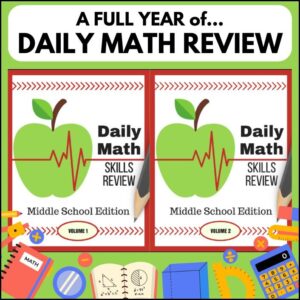 Buy Now
Buy Now$20.00Original price was: $20.00.$18.00Current price is: $18.00.One FULL year of daily math skills review for middle school students (180 days). Each day, students will be given 3 questions and designed to review a multitude of middle school math skills.
See below description for skills covered:
-
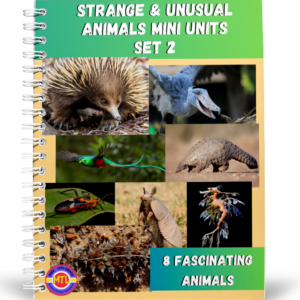 $8.00Buy Now
$8.00Buy NowStudents will love learning about 8 different ‘strange and unusual’ animals in this set of eight mini units! In each mini unit, students will learn all about one very uncommon animal, what they look like, where they live (habitat and location), what they eat, interesting facts, interactions with humans, if they are kept as pets / have been domesticated and more!
Animals in this set:
– Assassin Bug
– Moloch
– Quetzal
– Sea Dragon
– Shoebill Stork
– Armadillo
– Pangolin
– EchidnaPages include colorful photos and will keep students interested as they learn about each animal. After reading, students will have 2 notebooking pages to complete about each animal.
Also included: Taking it Further – Additional suggestions for building additional knowledge and fun extended activities!
Also, check out…Strange and Unusual Animals | Set 1
-
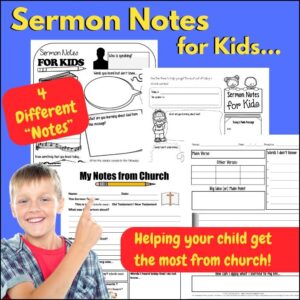 $5.00Buy Now
$5.00Buy NowHelp your kids get the most from church with My Teaching Library’s Sermon Notes for Kids! This product includes 4 different designs of sermon notes which will allow your kids to:
- Take notes during each service
- Answer questions for self-reflection
- Keep a record of every service they’ve attended
Parents then can use their child’s completed sermon notes to engage in conversation and extend their child’s learning by discussing the sermon’s message, their child’s understanding and how they may apply what was taught!
This resource is for family use only.
Need these sermon notes to use in a church ministry? Purchase Sermon Notes w/ Ministry License! -
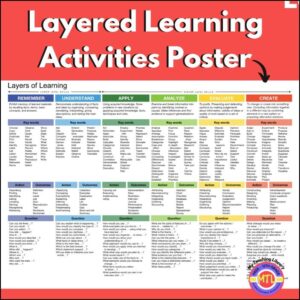 $2.00Buy Now
$2.00Buy NowLayered learning is vital for student retention of information and full comprehension of knowledge. This activities poster has been designed to help you create the very best learning experience for your students. Download, print and keep handy when preparing all of your lesson plans.
-
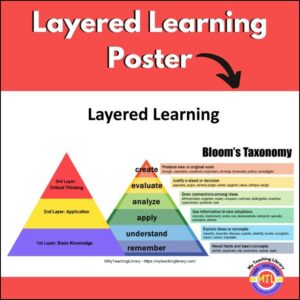 $2.00Buy Now
$2.00Buy NowLayered learning is vital for student retention of information and full comprehension of knowledge. This poster has been designed to help you create the very best learning experience for your students. Download, print and keep handy when preparing all of your lesson plans.
-
Sale!
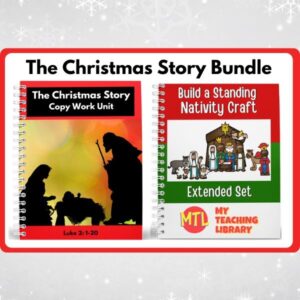 Buy Now
Buy Now$8.00Original price was: $8.00.$7.00Current price is: $7.00.Teach children the true meaning of Christmas with the Christmas Story Bundle. The bundle includes two resources:
– Christmas Story Copy Work Unit
– Build a Nativity Extended Set | Christmas CraftUsing the first resource, children will copy and illustrate Luke 2 of Christ’s birth. With the second, they will create a craft displaying the nativity scene.
-
Sale!
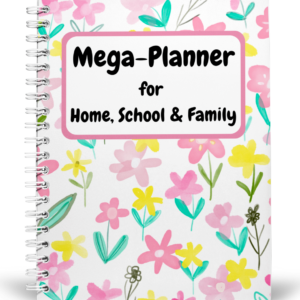 Buy Now
Buy Now$25.00Original price was: $25.00.$20.00Current price is: $20.00.Everything you need to help you plan and keep organized for home, school and family! Purchase once and use year after year. School forms have been designed so that you can have what you need, regardless of what grade(s) you are teaching. If you are just starting out, you’ll be able to use this one organizer all the way through and in every stage of your planning from beginning to end, throughout each school year. But My Teaching Library didn’t stop there…MTL has added valuable forms to help you keep organized within your home and if you own a business, in your business as well.
– See everything that is included in the below description!

